Did you know you can get the Sprott Money Weekly Wrap Ups, Ask The Expert,
special promotions and insightful blog posts sent right to your inbox?
Sign up to the Sprott Money Newsletter here.
With Craig not available this week, Sprott Money’s Kam Hesari steps in to pick the brain of returning guest, Tavi Costa, Partner and Portfolio Manager of Crescat Capital. Thanks to all the great questions from our listeners, we’ve got a really insightful interview this week.
In this edition of the Weekly Wrap-Up, you’ll hear:
- Discussion on the equity market bubble.
- In depth reasons as to why ‘transitory’ Inflation will be sticking around.
- The future of future stimulus?
- The reasons Central Banks are bulking up their gold reserves.
- Plus: Which is the better investment right now - Gold or Silver?
“Even though I love gold, silver is the one commodity, or some like to call it currency, that is under valued to not only gold but also relative to the equity markets, the monetary base, money supply, and to the amount of debt we have in the system. It’s the type of commodity that does very well during more inflationary environments. We’ve had 30 years of declining inflation. I don’t think we are going to see the same in the next 30 years. So, we are at the beginning of a bull market for silver.”
Kam: You're listening to the "Weekly Wrap-Up" on Sprott Money News. Happy Friday. Welcome to Sprott Money's Weekly Wrap Up. This is Kam Hesari filling in for Craig Hemke. This week's special guest is Tavi Costa, who's a partner and portfolio manager at Crescat Capital. Thanks for tuning in. If you enjoy today's podcast, please like, share, and subscribe to our channel. Also, be sure to tune in to our monthly "Ask the Expert" and precious metals projections podcasts. All right. Tavi, thanks for joining me today. Talk about a volatile week, to say the least. Tavi, do you think U.S. equities, in general, are in a bubble?
Tavi: I do. I do think they're in a bubble. We've had, you know, a list of evaluation factors that we looked at at Crescat Capital. What we find is that we're probably in one of the biggest speculative bubbles in equity markets we've seen in a real long time. If you looked at valuations from a median perspective, from a average perspective, or even from more of a market cap, aggregate perspective, all of those show that we are in highly speculative periods right now in the U.S. equity markets. I think it's also accompanied by corporate bond market, and sovereign bonds and housing market and some other parts of the economy. But I would say that the equity markets are indeed extremely overvalued and being propped up by most of the monetary and fiscal policies that we've seen so far.
Especially since, not only the global financial crisis, but the real intensification of that since the beginning of the pandemic. So, I believe that the sentiment is euphoric. I think it's hard to justify those valuations that we have, especially in high-flying names, such as the tax base. And those are companies that have done very well in a very positive deflationary economic environment, where I don't think it's going to be what we're going to be seen in the following years. I think it's going to be quite different, where cost of capital is going to rise. And it's going to make it difficult for investors to justify their positions in those markets.
Kam: Speaking of troubled markets, according to Bloomberg, over 24% of the Russell 3000 index are zombies. Tavi, is the collapse of zombie companies inevitable?
Tavi: Well, I think it is. I think most of those companies are capable of surviving in this economic scenario, especially when cost of capital is low. You know, a lot of the companies today, from Uber to Netflix, to other companies in the software and in tech space and even casinos that never make any money, would have a very hard time surviving if they were in the '70s. And so I think as cost of capital rises, it's going to make a lot more difficult for investors to navigate the space. And so profitability and margins are going to become a priority. And so, you know, which company today has profitability is, a bottom line improvement, is out of favor.
And so that's the whole rotation out of growth. Overvalued stocks into really undervalued stocks, especially in the natural resource industries. And so I think that that's going to occur in the following years, where we're going to see a rotation out of those high names. And I think profitability is going to start to become a priority again. It's important to know that a lot of the factors that have worked in the past, which were mostly the top-line growth, revenues growth, were usually the sectors that have really performed very well for companies in terms of the selection of securities process.
I think that's about to change, where we're going to see the bottom line improvement now becoming a bigger deal. And I like to see how the natural resource stocks, yes, they have rebounded recently, especially since the elections or so. Or since the vaccines, the vaccine news posts. But after the election day, or a week after that, but I still think that that's where the early [inaudible 00:04:47] have moved. Obviously, it's not going to be a straight line, but we're going to see a continuation of capital flowing into this industry instead of the other sectors in industries that have done so well. So, the leadership change is, I think, it's upon us. And so that's what I'm focused on.
Kam: A lot of the smart money agree with you on that. Stanley Druckenmiller, Paul Tudor Jones, J. P. Morgan, and Goldman Sachs are all very bullish on commodities and very concerned about inflation. Speaking of inflation, which scares the Fed more, inflation or deflation, and why?
Tavi: They will tell you that it's deflation. However, I think it really is inflation. I mean, when you ask the question, can they continue to have their policies? Look, it all comes down to inflation. If inflation really begins to get out of hand, there is not going to be any policies, they're going to have to do the opposite. And so we don't know what's likely to happen. But in both routes here, you see this commodities to equity ratio, positioning for a portfolio looking very attractive. Because if, you know, either commodities deserve to be much higher, or equities don't deserve to be where they are in terms of valuations, and this perfect [inaudible 00:06:11], in my opinion.
So, that's why I'm so focused on that as part of positioning instead of, you know, trying to figure out what the Federal Reserve is going to do. But I am aware of what the Federal Reserve routes or possible decisions are in the following years. So, I think inflation is a much bigger real concern if we see it. Deflation doesn't really matter. I mean, it allows them to really become more...you know, really be able to intervene in a level that we haven't seen before. And so, you know, we didn't see this level of unlimited money printing in the prior recessions. And so, you know, I think that this is a perfect scenario for being able to implement those policies if they would like to. The question is, how do you implement those policies in an inflationary environment? You just can't do it. So, I think that they will tell you that deflation is what they're concerned about. But I think inflation could really be the problem here where it limits central banks from doing what they have been doing in the last decades.
Kam: The Fed says inflation is transitory. Tavi, do you believe inflation is transitory?
Tavi: No, I do not believe inflation is transitory. I think, sure, in a way, it's all about probabilities. And I think the higher probability here is that it is not transitory whatsoever. And when you look at especially what is causing this issue, which I call the three pillars of inflation, they're all running a full cylinder right now. And so let's just look at them real quick. The first one is the fact that we have, you know, well above historical average of savings. So, you know, those savings accounts in households in the U.S. will, in my opinion, translate into higher demand where we might see actually...well, cash in the sidelines be put to work. The second thing is the net worth of individuals, especially the bottom 50% of the population in the U.S., believe it or not, has been doing very well. Their net worth increased by the largest amount in history and in the middle of a recession that looked a lot like a depression.
And so it's quite interesting to see that increasing net worth, which was partially caused by real estate improvement. But usually, if you study emerging markets, what you learn is that this improvement by the bottom 50% especially, tends to cause higher consumer spending as a whole. And so it's kind of what we're seeing with retail sales and some other measurements of the economy. I would say the second pillar has to do with the cost-push type of inflation. The number one part of it is the bottleneck issues we're seeing in regards to the supply shortage. Sure, some of that will be transitory. The issue that a lot of folks are not looking at is the fact that a lot of the natural resource industries have been under-investing in infrastructure development of projects, exploration for a real long time. We've been in a depression in that side of the market.
And so I think that, you know, for those believing that we can find improvements in that space quickly, are not really either knowledgeable about the time that it takes to develop mines and to be able to actually get natural resources back to the economy as quickly as a lot of economists are planning on. The second part of that is the labor shortage, which is something that we haven't seen in a real long time. And probably, you know, we saw some of that in 1919, but in a very different way, after the post-pandemic issues that we saw in the Spanish flu.
I think the labor shortage issue is just exacerbating one of the trends that we saw for a long time, which was the declining growth in wages and salaries. And so investors, or I should say companies and management in general, is actually going to be pressured, in my opinion, to raise wages and salaries in order to attract workers to return to labor market. And so I think this is all happening. We've seen signs of that all over the markets today. And the third one of the pillars, it really are the monetary delusion part, or the debasement side of it, or the stimulus that we're seeing from the Federal Reserve, especially in order to fund the fiscal stimulus. Where the Fed is becoming the buyer of last resort of treasuries, and I don't think that's going to change.
And so those three parts of this inflation thesis are really important to, in my opinion, to believe here that the higher probability in this case is that nothing that we're seeing is going to be transitory. Sure, we saw acceleration of inflation initially, and now we saw somewhat of a deceleration. Look at lumber prices down 50% from the peak. When you look at lumber prices as an example, in a quarterly basis, going back to the '80s and '70s, it's still well above any other time in history. So, we're seeing a real move in commodities, in my opinion. Some likes to call it supercycle, I like to call it the beginning of a cycle. I don't know if it's going to look like a supercycle. But I think it's just the beginning of a commodity cycles, where I should say that tangible assets should perform better than equity markets. So, that's really the call that I'm going for, for the following years.
Kam: Can the Fed raise rates to fight inflation without causing a market crash?
Tavi: I find it difficult to believe that they would be able to do that. I believe that, first of all, it became sort of a national order for the Federal Reserve to prop up housing markets by suppressing interest rates. And also the mandate of the Federal Reserve has absolutely nothing to do with inflation, or stability and maximum employment. If we look at what's going on today, and any person with a brain looking at the data, would easily realize that we are already at higher levels of that they were supposed to be, in terms of justifying the policies that we have today. So, I find it difficult that the market risky assets will be able to really, you know, sustain those valuations if we do have tightening policies going forward. So, that is my case for deceleration of growth. Is that an attempt to do something like that, like tightening or reducing or tapering or raising interest rates, but still is a very, very positive scenario for tangible assets. Because I highly doubt that they're going to be able to accomplish their mission.
Kam: Does that mean we need larger and larger stimulus packages in order to keep the economy afloat?
Tavi: I think that is correct. I think the economy is dependent on stimulus from the fiscal and the monetary side in a huge way. And that is why I believe that it's the time to be buying tangible assets, because it's not the time for you to buy those assets when you have organic growth. And that's not the case here. We're seeing quite the opposite with money velocity falling, which some folks see that as highly deflationary. Again, it's just one factor that plays into that. We saw that in Japan, gold in Japanese yen terms actually went up, while money velocity was falling.
But going back to your question, I do believe that it's very difficult to see a great depression type of scenario, given the amount of stimulus and excess liquidity that we're seeing in the system today. And for me, it really falls into two routes that the Federal Reserve can take. One is to tighten and have this reckoning moment for risky assets, which I highly doubt they would take that route. But the second one is continue to provide liquidity to the equity markets in the economy, and corporate bond markets and so forth, especially the Treasury market, and by doing that at a cost of creating inflationary forces. So, that's what concerns me, is the second route where I think they're going to be taking.
Kam: Tavi, does that mean you're bearish on the U.S. dollar?
Tavi: I am bearish on U.S. dollar, relative to tangible assets. The positioning for Crestcat. I mean, I can only speak for my position in the portfolio rather than...No, obviously, I tried to express my opinions as best as I can. I am bearish, to answer your question, I'm bearish on the U.S. dollar. But I don't think that the U.S. dollar or the U.S. economy is the only one lacking fiscal and financial discipline outside in the rest of the world. We have China doing the same, we have Hong Kong. I mean, the Chinese banking system is three times...over three times the size of their economy. Not even in the peak of a wait we saw that in the U.S. So, peak level seven, I should say, when the housing bubble didn't start bursting.
Now, you know, we see the same in Hong Kong, this Europe, you know, highly indebted. So, I think there's the race to the bottom for fiat currencies. And I do think the dollar, though, is a bit stronger than some other currencies. I would much rather own U.S. dollars than Brazilian real, for instance, or the Chinese yuan. I think that a lot of folks have not done their homework looking at the debt imbalances and how those tend to be, you know, perfect recipes for large currency devaluations in places like China, in some other areas of Asia. And so emerging markets would suffer consequently, too. And so I think that, yes, I'm bearish on the U.S. dollar versus gold. But I like to own gold relative to the most overvalued currencies in the world today.
So, I have gold positions, precious metals positions, commodity positions, tangible assets positions, relative to other currencies too. So, when you own a minor in Brazil, you're basically owning an asset that performs well when gold and silver prices go up. And we're talking about precious metals minor. But also a company that is paying their employees in Brazilian real. So, as the Brazilian real devalues, you see the margins of those companies improving. So, I like to own those assets in a lot of different places, including the U.S.
Kam: Tavi, a question that I hear often is, why has there been a surge in central bank gold buying over the last few years? And what are these central banks concerned about?
Tovi: Well, there has been a need for improvement of international reserves as one of the main factors to keep the quality of a currency, usually as one of the important aspects of strong currency is being backed by strong international reserves. Back in the day, international reserves used to mean owning gold. And so as we enter this process of a race to the bottom of fiat currencies, at least accelerating relative to other years, I believe that there is going to be a need to purchase tangible assets, such as gold, in order to improve the quality of those reserves. And so I think that's what we're seeing now.
And we're probably going to continue to see that going forward. We saw trends like that in other periods of times, especially, you know, in the '80s, in some places, like emerging markets. So, I think we're seeing this worldwide today. And even in developed economies, too. But that's a normal trend that you tend to see at times when there is this notion or this fear of currency debasement in almost any fiat currency today. So, I think that's a trend that is here to stay.
Kam: Which do you believe right now is more lucrative, gold or silver?
Tovi: I would say, no doubt, it's silver. Even though I love gold, silver is the one commodity, or some like to call it currency, that is undervalued relative to, not only gold but also undervalued relative to the equity markets. It's undervalued relative to the monetary base, money supply, to the amount of debt that we have in the system. It's the type of commodity that does very well. During more inflationary environments, we have 30 years of declining inflation. I don't think we're going to see the same in the next 30 years. So, I think there will be...you know, we're at the beginning of a bull market for silver. We saw the beginning of that since the pandemic crash, so large appreciation of silver prices.
And I believe we're now hugging this $26, $27 handle announced. Once we break this level on a quarterly basis more sustainably, I think we're going to go well above $30 and then get it up to all-time highs very quickly. So, I am very bullish on silver. I think it fits well, this old to the new economy agenda. Where a lot of politicians are focused on the electrification of the world and innovations that we may see from this, but are not focused on the highway to get there. And the highway to get there is on the commodity side. And the commodities, one of the most important ones that fall into that category, is silver. And I like the fact that silver has, not only those properties, but also the monetary alternative properties of eventually being one way to protect against monetary debasement.
So, I think silver is the cheapest metal on Earth. I've been saying that for a while and I've been right on that call. And I'm gonna stand by that because I believe it's going to be, you know, at much higher levels in the following years. And I think it's one of the things that I'm mostly excited about. And the best way to be explosive is, in my opinion, is looking for silver in the ground. That's the most leveraged way and more asymmetric opportunities that you can find worldwide in this space.
Kam: Tavi, how long do you think it's going to take silver to make an all-time high?
Tavi: I think we're going to see that in the next three years. You know, can we see that before? Sure. You know, if things really go bananas in terms of the policies that we're seeing even more, yeah, we could see it even earlier than that. But I'd like to be conservative on that call, you know, and I hope it doesn't happen so quickly. I hope it happens sustainably and calmly. And so I have the time to not only...well, I'm fully positioned on that trade, however, though, we own only over 80 companies in the precious metals and commodities space already. However, I do think that I would like this to be a sustainable move to the upside, but who cares about what I like? You know, things could move a lot faster than that. And I can definitely see precious metals becoming a bubble. But I think we're at the beginning of one, not at the end of one. So, I like to be positioned accordingly.
Kam: Tavi, thanks for sharing your wisdom with us today. Please let our viewers know where they can find your work.
Tavi: Sure. It's been my pleasure to be part of this. Thank you very much for having me. They can find my work at www.crescat.net, we put out letters and a lot of research pieces there. You can find my work at Twitter, @TaviCosta is my handle and also on Instagram, @tavicostamacro. And the final one would be on YouTube. We do weekly, almost weekly, presentations about companies who are getting involved in the mining space, and where we talk about the macro environment and our thesis behind our involvement with those companies. So, I appreciate the invitation again to be here. Thanks again for having me.
Kam: On a final note, there's two kinds of people in this world. Those who believe ignorance is bliss and those who believe knowledge is power. Now, those that believe ignorance is bliss, likely won't listen to programs like this, and knowledge is only power if one takes action. If you haven't positioned yourself to be a beneficiary of the coming reset, please call us at 1-888-861-0775 to discuss all your bullion options in depth. Alternatively, you can shop online at www.sprottmoney.com. Well, that's it for this edition of Sprott Money's Weekly Wrap Up. I hope you found it a value please like, share, and subscribe, and see you next week.
Don’t miss a golden opportunity.
Now that you’ve gained a deeper understanding about gold, it’s time to browse our selection of gold bars, coins, or exclusive Sprott Gold wafers.
About Sprott Money
Specializing in the sale of bullion, bullion storage and precious metals registered investments, there’s a reason Sprott Money is called “The Most Trusted Name in Precious Metals”.
Since 2008, our customers have trusted us to provide guidance, education, and superior customer service as we help build their holdings in precious metals—no matter the size of the portfolio. Chairman, Eric Sprott, and President, Larisa Sprott, are proud to head up one of the most well-known and reputable precious metal firms in North America. Learn more about Sprott Money.
Learn More
You Might Also Like:




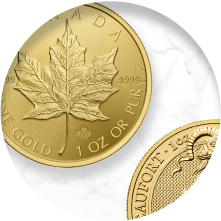

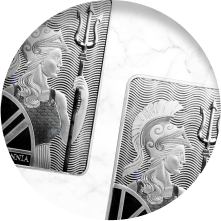



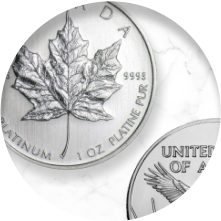

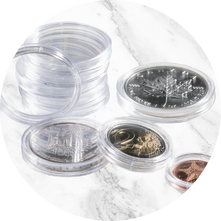

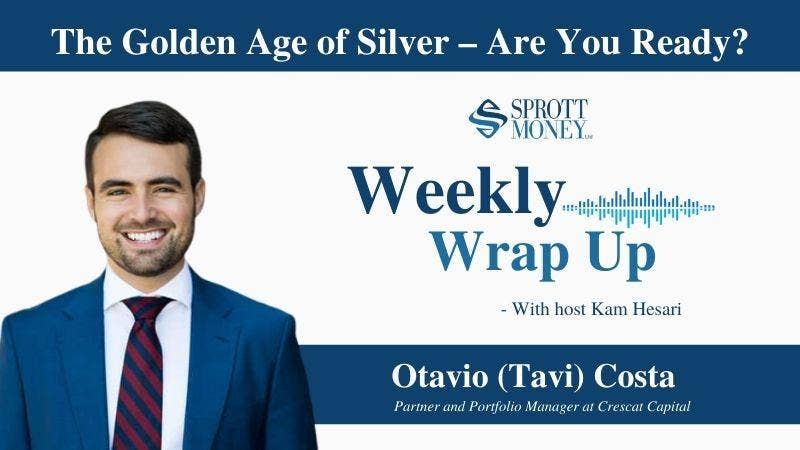


Looks like there are no comments yet.